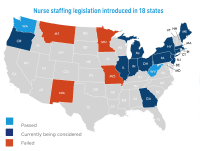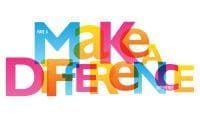Today’s news cycle is measured in seconds rather than hours as the public post blogs, commentary, videos, and photos on social networking sites, webpages, and message boards. Thanks to Wi-Fi and an expansive Internet, messages and images instantaneously fill the screens of smartphones, tablets, and computers. A high-resolution digital camera (a standard feature of most smartphones) delivers a daily dose of life to friends, family, colleagues, and sometimes strangers. Have smartphone will travel, allowing anyone to be a photographer or an amateur reporter as an eyewitness to developing news stories. Bearing witness to life’s events from tragedies to celebrations, celebrities, and emergencies, we rely on the relay of instant images that capture first glimpses of newsworthy incidents.
These images tell stories and help communicate messages that words alone cannot convey. They can warm or break our hearts, make us laugh, and make us proud. Having high-quality photographs for use in newsletters, on websites, in social media, and supplied to media outlets can be an effective tool for delivering a message to the public.
What images are telling nursing’s story? As I recently prepared content for a chapter on working with the media in the soon-to-be-published book, Nurses Making Policy From Bedside to Boardroom, I encountered a distressing trend. I was looking for photos that depicted nurses taking action to influence health policy.
I wanted to see nurses involved in political events, community activism, or interactions with public officials. But the images I found were of nurses gathered around a statue, celebrity, or building, looking like a tour group. Where was the action? Where did we memorialize nurses in intense discussion with members of Congress or testifying at hearings? When nurses screened low-income residents for potential health problems, why didn’t we capture their work or discussions with local health authorities or community leaders? Where were images of nurses receiving awards as activists and heroes?
Images from the 20th century are remarkable, with nurses marching for suffrage and demonstrating in support of the Equal Rights Amendment. Photos tell a story of bold action. In my web search for recent images, the most prevalent were of the California Nurses Association’s organizing activities and job actions. I found a small number that reflected nurses in contemporary meetings, such as unveiling of the Institute of Medicine’s report, “The Future of Nursing: Leading Change, Advancing Health.” Only a few photos memorialized nurses at White House events.
Perhaps I didn’t exhaust my search terms when looking for images of nurses in action. But we want the public to know where nurses are making inroads to effect changes in health policy locally, regionally, and nationally. We want people to relate to nurses as their advocates, educators, caring professionals, and partners in changing health care for the better.
We want to be the professionals our neighbors think of first when they want advice, clarity, and trustworthy information. We want images that reflect informed, respected, highly influential testimony of our work.
Serious pictures can tell the story. Canned photos of actors and actresses do little to create the image we want. We can start by posting photos on social media sites and building an archive that depicts nurses in action, then sharing it with the American Nurses Association, state nurses associations, and specialty organizations—images we can share on demand with all forms of media. We also can partner with media outlets to ensure nurses are top of mind, so when there’s a healthcare story to be told, nurses are the first point of contact for a credible and quickly reliable source.
This month’s issue brings you the winners of the first of several photo contests that will begin to establish a photo repository of nurses leading the way—the theme of 2014 National Nurses Week. This first installment includes photos of what makes nurses feel proud to be a nurse. The four winning entries, selected by our Editorial Advisory Board members, appear on page 21.
Help build a pictorial legacy of nursing. The next time you and your colleagues engage in action, think about being part of an impromptu nursing press corps.
Pamela F. Cipriano, PhD, RN, NEA-BC, FAAN
Editor-in-Chief
Nurses Making Policy From Bedside to Boardroom, edited by Rebecca Patton, Margarete Zalon, and Ruth Ludwick, is expected to be published by Springer and ANA in October 2014. Book proceeds will go toward helping to fund a future nurse internship at the White House.


















